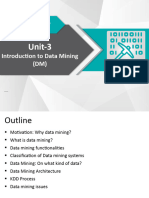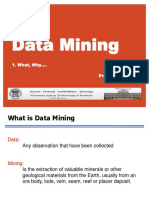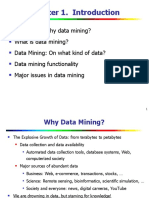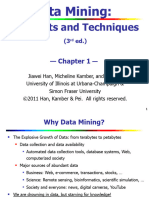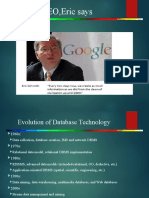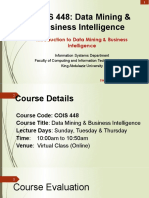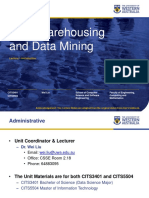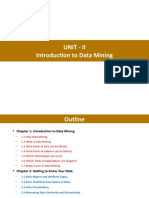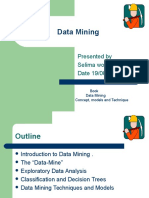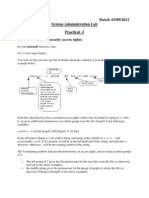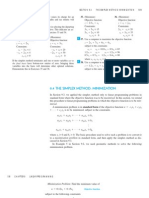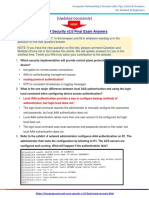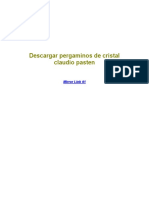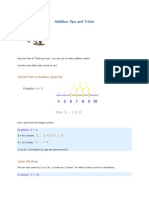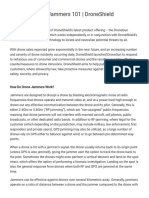0% found this document useful (0 votes)
21 views14 pagesClass 1a-DataCollection
The document provides an overview of data mining and knowledge discovery, highlighting its purpose of extracting useful knowledge from large datasets. It discusses the multidisciplinary nature of data mining, key definitions, and the life-cycle of data mining projects, including motivations and critical dilemmas. Additionally, it outlines various tasks and methods in data mining, as well as examples of discovered rules and open-source software tools for data mining.
Uploaded by
eltcarvaCopyright
© © All Rights Reserved
We take content rights seriously. If you suspect this is your content, claim it here.
Available Formats
Download as PDF, TXT or read online on Scribd
0% found this document useful (0 votes)
21 views14 pagesClass 1a-DataCollection
The document provides an overview of data mining and knowledge discovery, highlighting its purpose of extracting useful knowledge from large datasets. It discusses the multidisciplinary nature of data mining, key definitions, and the life-cycle of data mining projects, including motivations and critical dilemmas. Additionally, it outlines various tasks and methods in data mining, as well as examples of discovered rules and open-source software tools for data mining.
Uploaded by
eltcarvaCopyright
© © All Rights Reserved
We take content rights seriously. If you suspect this is your content, claim it here.
Available Formats
Download as PDF, TXT or read online on Scribd
/ 14




